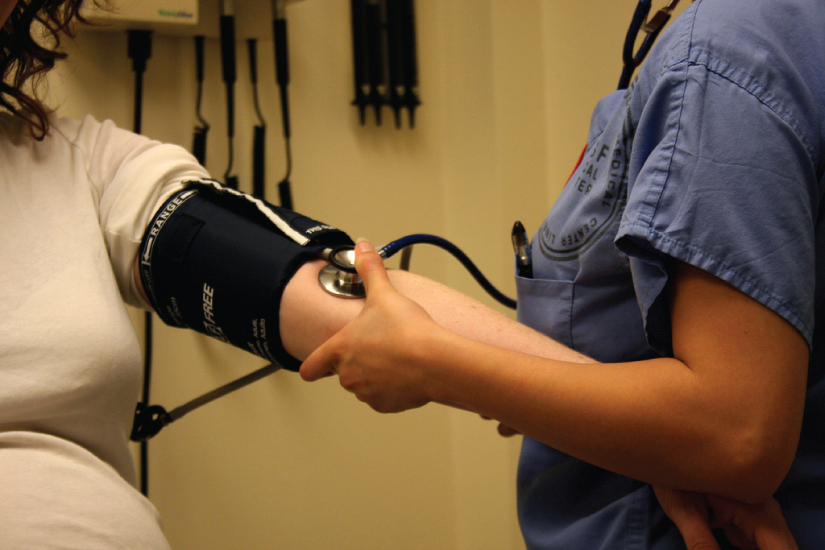
|

1.1 An introduction to the human body Read Online
1.2 The chemical level of organization Read Online

After studying this chapter, you will be able to:
Though you may approach a course in anatomy and physiology strictly as a requirement for your field of study, the knowledge you gain in this course will serve you well in many aspects of your life. An understanding of anatomy and physiology is not only fundamental to any career in the health professions, but it can also benefit your own health. Familiarity with the human body can help you make healthful choices and prompt you to take appropriate action when signs of illness arise. Your knowledge in this field will help you understand news about nutrition, medications, medical devices, and procedures and help you understand genetic or infectious diseases. At some point, everyone will have a problem with some aspect of his or her body and your knowledge can help you to be a better parent, spouse, partner, friend, colleague, or caregiver.
This chapter begins with an overview of anatomy and physiology and a preview of the body regions and functions. It then covers the characteristics of life and how the body works to maintain stable conditions. It introduces a set of standard terms for body structures and for planes and positions in the body that will serve as a foundation for more comprehensive information covered later in the text. It ends with examples of medical imaging used to see inside the living body.
Question: Pancreatitis would be which of the following on an abdominocentesis?
Choices:
Transudate
Modified transudate
Exudate
Question: Which of the following is not an appropriate treatment for pancreatitis?
Choices:
IV fluids
Maropitant ( Cerenia)
Fentanyl
Antibiotic
Anitcholinergic
Question: __________ commonly get acute pancreatitis and ____________ commonly get chronic pancreatitis.
Choices:
Dogs, Cats
Cats, Dog
Question: What is the most common cause of bile duct obstruct in dogs?
Choices:
Pancreatitis
Lymphoma
Liver flukes
Bile Duct carcinoma
Cholelithiasis
Question: Prehepatic icteric animals will have regenerative anemia (PCV <20). True /False
Choices:
True
False
Question: 6 yr old female mix dog presents for yellow eyes (icterus), owners note that dog has been slowing down over the last 6 months. There is no PD/PU, vomiting, diarrhea or respiratory signs. The urine seems to be very dark in color. The vaccinations are current, there have been no past major medical problems. TPR normal. Abdominal palpation and radiographs confirm large spleen. Bloodwork shows PCV 15%. These findings suggest the icterus is.....
Choices:
Prehepatic
Hepatic
Post hepatic
Question: Which of the following is FALSE regarding lymphangiectasia?
Choices:
Clinical signs include weight loss, diarrhea/steatorrhea, ascites/hydrothorax, edema in extremities, and excercise intolerance
A hallmark diagnostic findings is panhypoproteinemia and low cholesterol
Treatment for lymphangiectasia is high fat diet to restore the lost fat
The loss of AT III is life threatening because of potential thrombosis
It is defined as an idiopathic disorder of lymph drainage common in Yorkshire terriers, Norweigan Lundehunds, and Wheaten terriers.
Question: 9 yr old golden retriever presents with abdominal pain, acute vomit and collapse. The CBC shows inflammation Chem panel shows increase in bililrubin, BUN ,Creatinine, Cholesterol, ALT and AST. An abdominocentesis reveals suppurative inflammation and lipase. You suspect Pancreatitis . what diagnostic test would help prove or disprove your diagnosis?
Choices:
Radiograph
TLI test
Urinalysis and fecal
Amylase and Lipase test
SNAP PLI test
Question: 4 yr old DSH cat presents for icteric pale membranes, weak , obtunded, progressive anorexia, lethargy, and dark urine. Lab results show 4+bilirubinemia and a PCV 13 %. What are differentials for prehaptic icterus in cats?
Choices:
FeLV
IMHA
ingestion of Tylenol capsule
Copper/Zn toxicity
All of the above.
Question: Which of the following is a protein losing enteropathy?
Choices:
Parasite infection
Lymphangieectasia
IBD
Intussuception
All of the above
Question: If modified transudate (between 2.5-6.0 mg /dl protein count; cell count of 500-10,000) is identified on an abdominocentesis, which of the following is not a possible differential?
Choices:
Protein losing enteropathy
Right side heart failure
Hepatic insufficiency
Mass lesion
Vena cava obstruction